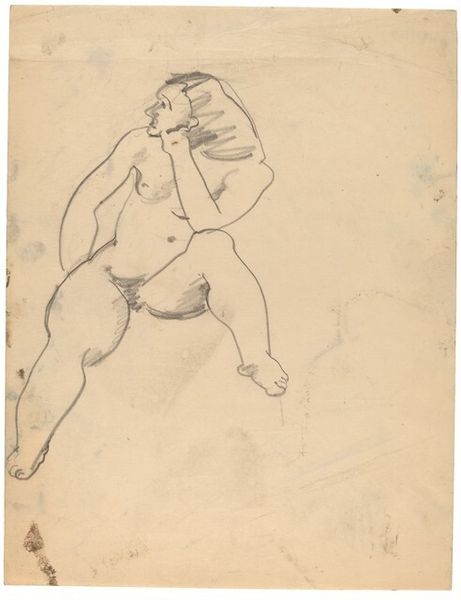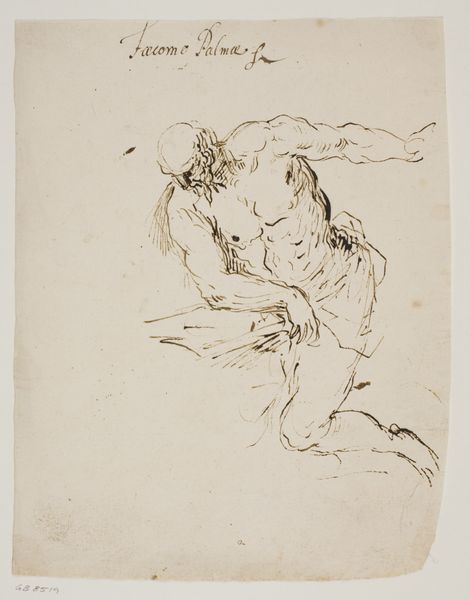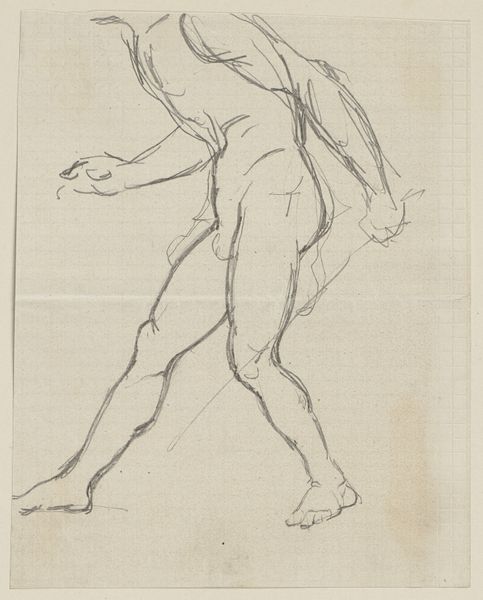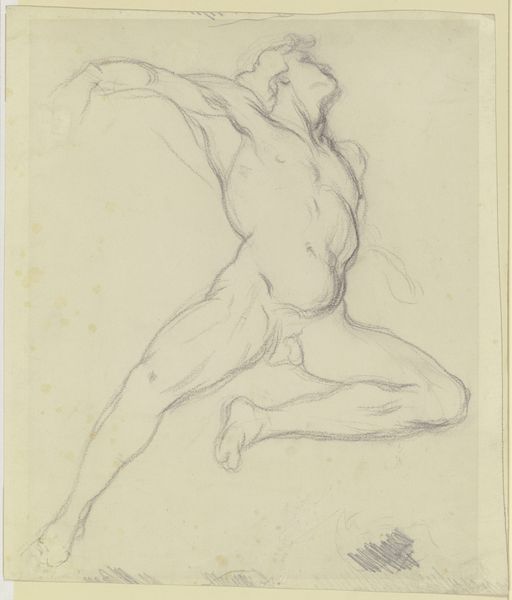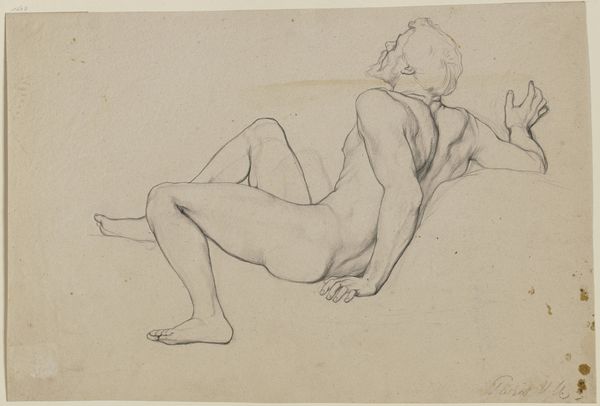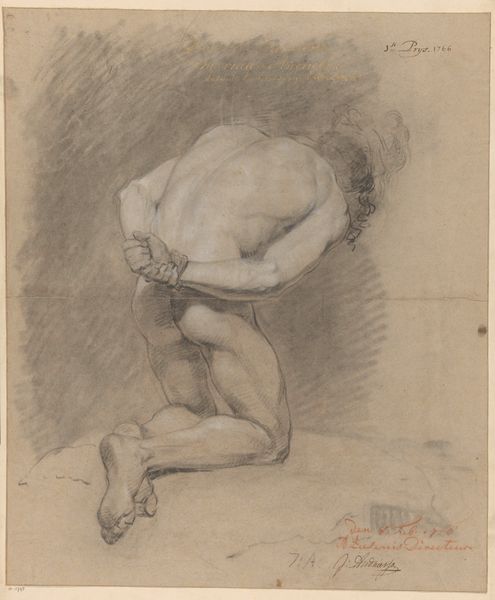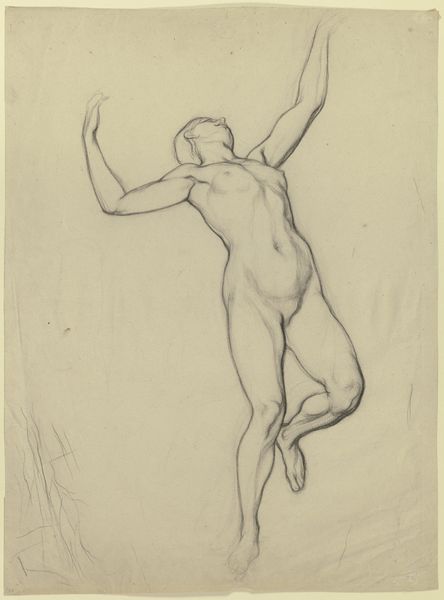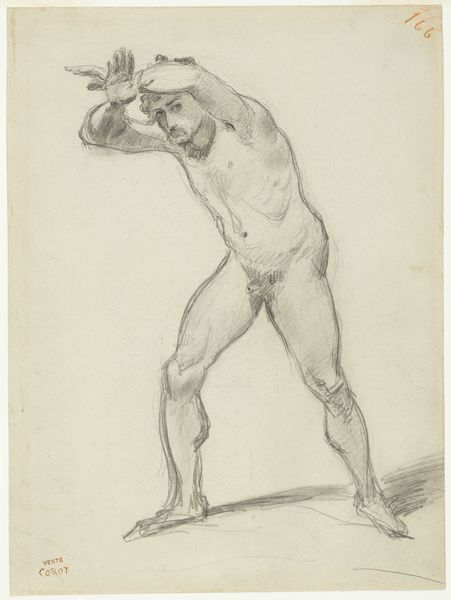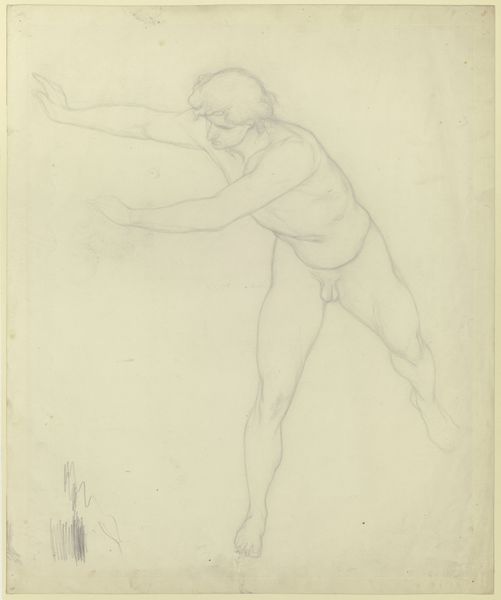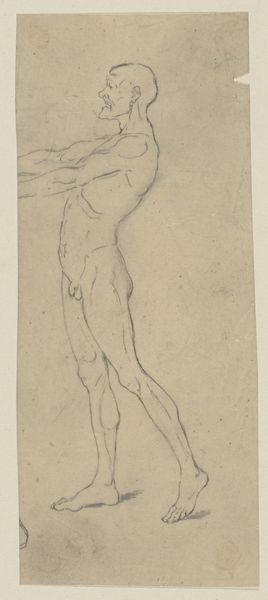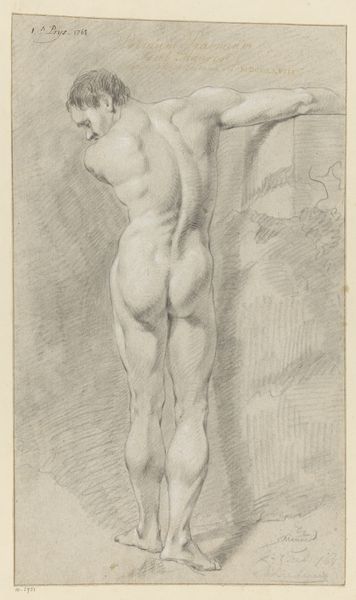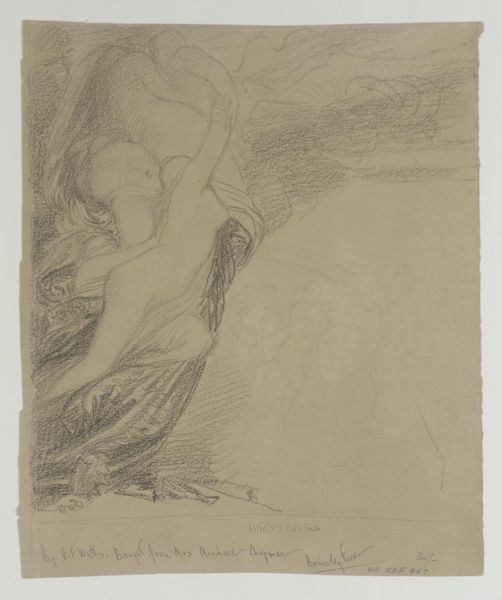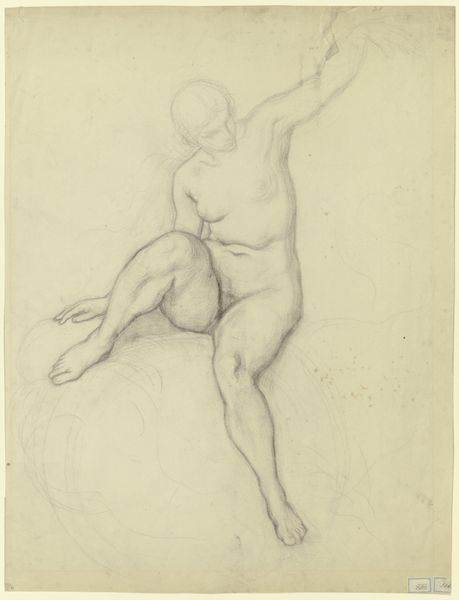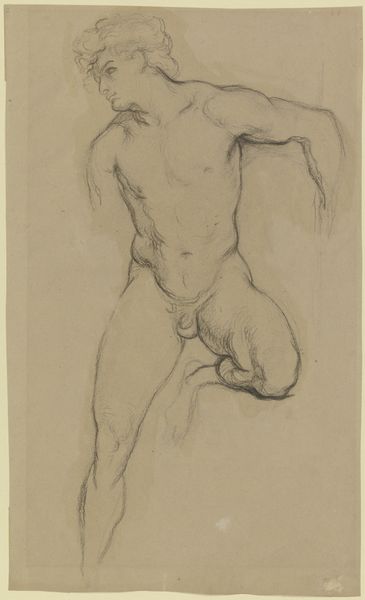
drawing, pencil
#
drawing
#
pencil sketch
#
figuration
#
pencil
#
pencil work
#
academic-art
#
nude
#
realism
Dimensions: height 345 mm, width 215 mm
Copyright: Rijks Museum: Open Domain
Curator: We’re looking at "Bearded Man Emptying a Jug," a pencil drawing created by Johan Michaël Schmidt Crans sometime between 1880 and 1890. Editor: It feels elemental somehow, stark even in its simplicity. The lines are economical but manage to convey this sense of raw physicality, and I love the implied action of the pouring. Curator: Indeed. Crans was working firmly within the academic tradition, clearly focused here on mastering the human form through direct observation. This work is a figuration study showing a nude, muscular figure caught in this act of emptying. But his nudes depart quite drastically from that of someone like Cabanel, though. Editor: Absolutely. The imagery carries biblical weight—I immediately think of cleansing or sacrifice. The bearded figure is clearly an allegorical reference to ancient strength. But even this elemental power is finite. Whatever was in that jug, it's now spent. I suppose it also reminds of us old Greek vase paintings where men also carried vessels in similar manners. Curator: Good connection. Now consider the art world at this moment. We see the rise of photography challenging academic art. Artists increasingly explored private visions and subjective emotions over strictly representational imagery. Could that shift perhaps offer an additional window to this man's seemingly exhausted action? Editor: I see that angle, definitely. He is not a glorious victorious hero but just a man struggling, the light pencil work might indicate vulnerability or an internal state that might otherwise go unnoticed if this was created in a different medium. Perhaps Crans aimed to convey this vulnerability and physical reality of what might otherwise be shown as a symbolic and historical subject? Curator: Exactly, the image, for all its realist accuracy, hints at deeper tensions about representation, about the burden of tradition and how that plays into shifts happening across visual culture during that period. The man struggles and history presses on him at once, almost palpable to feel in the details rendered by Crans’ hand. Editor: It adds such richness when we place these drawings in a broad social and historical landscape. A lot more potent now than merely studying the classical figure, thank you.
Comments
No comments
Be the first to comment and join the conversation on the ultimate creative platform.
